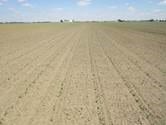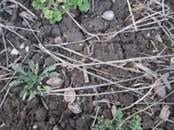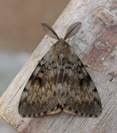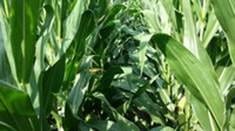Good Evening,
I don’t know if you noticed the 100 Years of Extension logo at the bottom of my email signature, but this year Extension is celebrating its 100th year. There will be a national celebration in May marking the signing of the Smith-Lever Act which provided for the Cooperative Extension Service. The Ohio State University Marching Band plans to recognize OSU Extension in October during the homecoming football game with a special band show saluting Extension work in Ohio. Extension work started locally in Hardin County in 1918 with the hiring of S.R. Heffron as the first county agent. This was carried out with the cooperation of the Farm Bureau when war emergency seed corn was provided to farmers. Two hundred producers attended threshing meetings that year and demonstrations were conducted on control of Stinking Smut Disease in wheat.
Extension has changed since then with the addition of 4-H and Youth Development, Family and Consumer Sciences, and Community Development educators in addition to Agriculture and Natural Resources. What memories do you have of Hardin County OSU Extension? Did you attend Twilight Tours, Sheep Tours, Conservation Tillage Club meetings, field days, pond clinics, or other Agriculture and Natural Resources programs? If so, how have these programs made an impact on your operation? Did you change the way you were doing something or try a new practice? We are currently looking for users of Extension to write articles for our 100th Year of Extension insert for the Kenton Times. If you are willing to contribute an article, please let me know as soon as possible so that we can it done by April 23 for inclusion in this special edition flier. This effort will resemble the 4-H supplement and will be sponsored by ads.
Information is now available for 2014 Hardin County Current Agricultural Use Value (CAUV). We have copies of the new tables and the Hardin County CAUV History Chart for different soil types in our office. Current Agricultural Use Value of cropland is calculated using a formula which includes yield information, cropping pattern, crop prices, non-land production costs, and capitalization rate. Information is also available on woodland and pastureland values. Stop by the office and pick up a copy if you are interested in seeing the new rates and want to know how they are calculated. So far, five individuals have decided to become CoCoRaHS rainfall collectors. I am still looking for five more volunteers and need people in the Roundhead, Ada, Forest, Hepburn, and Mt. Victory areas. See the attached news release for more details. Below are some articles that you might find interesting.
Rainfall Research News Release
Mark
Evaluate Alfalfa Stands For Winter Injury – Rory Lewandowski
As alfalfa stands break dormancy and begins growth, growers should make plans to take some time to evaluate the health of those stands and determine if there was winter injury. Some early bud growth was observed the last full week of March in the southern half of Ohio. This evaluation is especially important in those areas of the state where we had periods of near zero to below zero temperatures this winter combined with little to no snow cover during some of those cold temperatures. To continue reading this and other beef related articles, go to http://beef.osu.edu/beef/beefApr0914.html.
Getting Your Corn Crop Off to a Good Start in 2014 – Peter Thomison
Mistakes made during crop establishment are usually irreversible, and can put a “ceiling” on a crop’s yield potential before the plants have even emerged. The following are some proven practices that will help get a corn crop off to a good start. Perform Tillage Operations Only When Necessary and Under the Proper Soil Conditions. Avoid working wet soil and reduce secondary tillage passes. Perform secondary tillage operations only when necessary to prepare an adequate seedbed. Shallow compaction created by excessive secondary tillage can reduce crop yields. Deep tillage should only be used when a compacted zone has been identified and soil is relatively dry. Late summer and fall are the best times of year for deep tillage. Go to http://corn.osu.edu/newsletters/2014/corn-2014-8/getting-your-corn-crop-off-to-a-good-start-in-2014 to read more about approved corn production practices.
Weed Identification Resources – Mark Loux
We frequently receive questions about how to identify weeds and what the best resources are to help with identification. There are many resources available for plant identification, but these are some of the ones we use the most, divided into four categories – books, online PDFs, websites, and apps (internet access not necessarily required except to download initially). We still often start the identification process with several books, because this can be faster and more comprehensive than using the web. To find out more about these books, online PDFs, websites, and apps, go to http://corn.osu.edu/newsletters/2014/corn-2014-8/weed-identification-resources.
Summer Work Opportunity – Ohio Department of Agriculture
The Ohio Department of Agriculture (ODA) in cooperation with the USDA/Forest Service is looking for help in the field this summer placing pheromone traps for our biological survey of the gypsy moth. This program is an eleven state, federally sponsored project to collect data on the movement and population densities of the Gypsy Moth, Lymantria dispar (L). The trappers will be responsible for constructing traps, placing traps in pre-designated locations, conducting mid-season inspections/data collection, and performing final trap pull/data collection. Data collection on trap placement and positive catches will be recorded on handheld GPS units, as well as on a paper backup form. Data will be downloaded weekly with crew leaders and submitted to Forest Service Data Base. A crew leader and ODA personnel will be available for support. To read more about this job trapping Gypsy Moths in this area, see the two attached pdf files.
Bt Options for Corn Insect Control and “Know Before you Grow” – Andy Michel, Peter Thomison
Since the mid 1990’s and the first Bt corn product to control European corn borer was released, there are now numerous options available for corn insect management. At times, this information can be confusing, and thankfully our colleagues Dr. Eileen Cullen at the University of Wisconsin and Dr. Chris DiFonzo at Michigan State university have developed a handy Bt-Trait table, which lists all currently available options (a copy can be found at our webpage: http://www.oardc.ohio-state.edu/ag/images/Handy_Bt_Trait_Table_a.pdf). To read the complete article ‘Bt Options for Corn Insect Control,’ go to http://corn.osu.edu/newsletters/2014/corn-2014-8/bt-options-for-corn-insect-control-and-201cknow-before-you-grow201d.
Mark A. Badertscher
Agriculture and Natural Resources Educator
OSU Extension Hardin County
1021 W. Lima Street, Suite 103, Kenton, OH 43326
419-674-2297 Office









